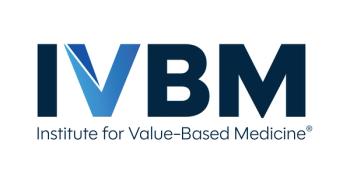
- Patient-Centered Oncology Care 2020
- Volume 26
- Issue 9
Managing the “Knowledge Explosion” a Key Challenge of Precision Oncology

Managing the constantly evolving selection of therapies in oncology can be difficult, but is of the utmost importance to get the right treatment to the right patient, agreed a panel at Patient-Centered Oncology Care® 2020.
New therapies. New tests. New technology to connect all the dots. Life for veteran medical oncologists looks almost nothing like it did at the start of their careers, which is both wonderful for patients and sometimes overwhelming to their physicians at the same time.
The panel on finding value in precision on oncology at Patient-Centered Oncology Care®, moderated by meeting Cochair Joseph Alvarnas, MD, took many turns as the physicians discussed sweeping changes that have converted many types of cancer to chronic conditions, along with the rise of genomic testing that allows them to more precise match therapy to a patient’s specific cancer.
But the panel featuring Edward R. Arrowsmith, MD, medical oncologist, Tennessee Oncology; David Debono, MD, medical director, oncology, Anthem; and Lee Schwartzberg, MD, chief medical officer, OneOncology, acknowledged that managing what Schwartzberg called the “knowledge explosion” takes new tools that didn’t exist decades ago, if one is to bring the right treatment to the right patient.
At the same time, the group said, oncologists are listening more to patient goals, which may be measured less in duration of survival time than in the quality of that time.
Anthem, Debono said, has responded with a pathways program, structured around patient-centered end points, as well as a 2-part oncology medical home that calls on practices to look at their process and to show improvement in quality. Keeping up with the constant change is difficult, he said. “There may very well be drugs and regimens that are FDA approved around [National Comprehensive Cancer Center] guidelines, but really don’t have those patient-centered end points such as quality of life or overall survival,” he said. “So, we really try to concentrate on what is the patient’s experience, and what are those end points?”
“Where we really try to focus is what we hear each day from patients, and the things they’re interested in are overall survival and having a better quality of life,” Arrowsmith said. “There’s a real focus on toxicities of therapy. And that’s where I think precision oncology is so valuable.”
Schwartzberg agreed with Debono’s goals for the medical home. “We want to be patient centered; we want to employ care navigation. And in the context of this discussion today, we’re also interested in advancing precision oncology as a subset of personalized medicine,” he said.
“It’s never been more exciting to be a practicing oncologist because of all the new tools we have at our disposal,” Schwartzberg said. Newer therapies can deliver better results with less toxicity, “exactly what we would want for everyone who has treatment for cancer.”
Both Alvarnas and Schwartzberg recalled past patients who had diseases such as chronic myeloid leukemia (CML) but were ill in the years before the existence of medicines that can now convert certain blood diseases to serious, but manageable, chronic conditions. “You’re really not just talking about incremental change,” Alvarnas said. “You’re talking about a fairly profound paradigm shift. “
“I remember the day imatinib came out and I switched all my patients,” Schwartzberg said. “Here it is 20 years later and 80% of them are still on imatinib. And I remember the 27-year-old with CML, who I treated a few years before [that day], who predictably at 4 years went into last crisis and died in a month. So, I think about that patient and she was just a few years too early for this.”
Two decades on, “we’re still understanding the power of targeting HER2, and it’s not a finished story,” Schwartzberg continued.
“We’re moving into the era of understanding pathways and the way cancer cells—which are extremely complex—work. Targeting [a single] particular driver alteration or checkpoint is not going to be the answer for most solid-tumor cancers, unfortunately.”
The expansion of comprehensive genomic profiling will help better understand what genes can be targeted, Schwartzberg said. But that’s just the start. Practitioners need a more comprehensive report from testing, not just on what drug should be given, but also what trials are available. “That’s the ecosystem,” he stated. Arrowsmith agreed, saying that Tennessee Oncology’s partnership with Sarah Cannon Research Institute means there is a constant focus on looking for clinical trial opportunities.
Alvarnas asked Debono how he believed payers respond in this “hyperdynamic” period of change. “It is difficult,” Debono acknowledged. “It’s a big challenge.” From a payer standpoint, he said, obstacles arise when drugs that are approved off er relatively small improvements in survival advantage. Some drugs can be too toxic, and it can hard to advise providers. Anthem’s pathways program features biomarkers to help address this, Debono said.
A Precision Medicine Approach
Schwartzberg said OneOncology began a molecular and precision medicine approach several years ago, “with the idea that we would recommend and by no means mandate” that patients with advanced cancers have comprehensive profiling as opposed to limited panels or single-gene assays.
This is because sometimes, later on in treatment, it’s hard to get a second biopsy. Sometimes, there’s not enough time. And there are “very good arguments” for comprehensive genomic profiling in lung cancer, an arena in which treatments proliferate, as well as in rectal cancer. In breast cancer, comprehensive testing has implications not just for the patient, but for families, Schwartzberg said. As liquid biopsies become more common, he predicted, the comprehensive profiling option will become less problematic.
But Debono, of Anthem, said the payer takes a “more cautious approach.” As data come in from the NCI-MATCH trial and the TAPUR study, biomarkers such as BRAF and microsatellite instability high seem promising, but another study Debono cited sequenced 2000 patients and offered recommendations to 700, but only 163 ended up getting targeted therapy, “and of those patients, only 23 had a partial response.”
Clearly, the oncology community is in broad agreement about some biomarkers, but as far as universal access to broad-panel genomic testing is concerned, “I think that’s a question that we haven’t quite answered,” Debono said.
Financial Toxicity
What about patients who cannot afford the “right” therapy? “This is literally the $64-million question,” Arrowsmith said. “And it’s one we really struggle with.”
Tennessee Oncology has an integrated pharmacy and helps patients seek foundation support, but it’s not easy. The practice works with Foundation Medicine to ensure support for patients who need help with access to testing.
He noted this is not an area that many physicians were trained to address. “I think this explosive increase in the price of drugs is something that we’re all going to have to deal with in the coming years,” predicts Arrowsmith.
Articles in this issue
about 5 years ago
Infrastructure of OCM Helps Practices Through COVID-19about 5 years ago
Implementation of Chronic Care Management and Telehealth in Oncologyabout 5 years ago
How Education, Access Can Optimize Value-Based Cancer Care Deliveryabout 5 years ago
How Federal Policy Decisions Are Influencing Cancer CareNewsletter
Stay ahead of policy, cost, and value—subscribe to AJMC for expert insights at the intersection of clinical care and health economics.





























































